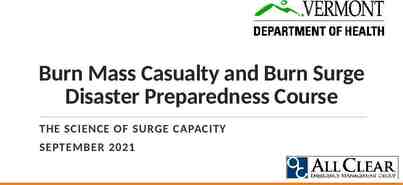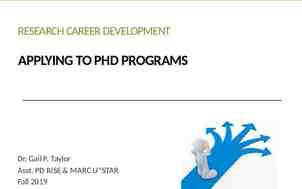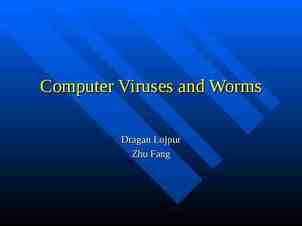Combined Effect: Enhancing Food Defense Strategies through Integration
42 Slides4.48 MB

Combined Effect: Enhancing Food Defense Strategies through Integration of Food Safety Practices at the State and Local Level Food Defense at the Retail Regulatory State and Local Level Gary W. Elliott, MA, REHS April 30, 2014

Overview FIRST Primary Retail Regulatory Focus - Food Safety or Defense SECOND FSMA and Proposed Rules THIRD AFDO, State and Local Perspectives FOURTH Exploring the integration of food safety practices with food defense principles

1 PRIMARY FOCUS FOOD SAFETY OR FOOD DEFENSE

Primary Focus Food Safety Preventing Foodborne Illness Related Risks Regulations or Rules Based On Prevention of Risk from: Unintentional and Intentional Contaminati on

Sub-Primary Focus Food Defense Prevention Focus on Intentional Contamination Threats Terrorism (International and Domestic Groups) Disgruntled Employee, Customers, Competitors Economic Sabotage Criminals

DEF INING FOOD SAFETY ENSE

Food defense has been defined as “a collective term to encompass activities associated with protecting the nation's food supply from deliberate or intentional acts of contamination or tampering. This term encompasses other similar verbiage (i.e., bioterrorism, counter-terrorism, etc.) (FDA, 2008).”

Food Defense Concerns Are Real Threats Are Real Documents Found in Afghanistan Caves during Operation Anaconda in 2002 (From: Williams, 2005).

A History Of Threats A Global Chronology of Incidents of Chemical, Biological, Radioactive and Nuclear Attacks: 1950-2005 Hamid Mohtadi and Antu Murshid* July 7 2006 http://www.ncfpd.umn.edu/Ncfpd/assets/File/pdf/GlobalChron.pdf http://cns.miis.edu/cbw/foodchron.htm

The impact of a major agricultural/foodrelated disaster in the U.S. would be enormous and could easily extend beyond the immediate agricultural community to affect other segments of society. It is possible to envision at least three major effects that might result— mass economic destabilization, loss of political support and confidence in government, and social instability. (Chalk, 2001)

“An enemy bent on victory at any cost could and will make the food supply of a populace a main target” (ShoahEducation.com, 2003).

Psychological Fears Probability of intentional contamination of the food supply is thought by some to be low Fact remains that the food/agricultural infrastructure and food supply remain targets of interest for terrorist organizations Survey by Stinson, Kinsey, Degeneffe, and Ghosh, (2007) published in the Homeland Security Journal High percentage among U.S. respondents polled (4,260 persons) were concerned about the possibility of deliberate contamination of the food supply

Psychological Fears

Psychological Fears Preliminary survey results about perceptions that Americans have toward homeland security conducted by Stanford University and NPS/CHDS professor Jim Breckenridge (Breckenridge, personal communication, 2008) 400 polled individuals 23.2 percent of the respondents polled saw contaminated food problems as a matter of great concern. The concern about protection of the food supply ranked third on a list of homeland security concerns related to fears of attack by terrorists.

2 FSMA and the FDA PROPOSED RULES

Food Safety Modernization Act Focus On Specific Sections Section 205(c)2 of the Food Safety Modernization Act (FSMA) requires a review of state and local capacities in order to enhance the development primarily of strategies required under 205(c)1, but also sections 108, 110, 209 and 210. Sec. 108. National agriculture and food defen se strategy. Sec. 110. Building domestic capacity.

Food Safety Modernization Act Focus On Specific Sections Sec. 209. Improving the training of State, local, t erritorial, and tribal food safety officials. Sec. 210. Enhancing food safety.

Food Safety Modernization Act Focus On Specific Rules Proposed Rule: Focused Mitigation Strategies to Protect Food Aga inst Intentional Adulteration Docket Number: FDA-2013-N-1425 December 2013 Food Defense Plan Each facility covered by this rule would be required to prepare and implement a written food defense plan, which would include:

Focus On Specific Section Of Rule Actionable process steps Focused mitigation strategies Monitoring

Focus On Specific Section Of Rule Corrective actions Verification Training Recordkeeping

3 AFDO STATE AND LOCAL REGULATORY PERSPECTIVES

Perspectives How does the new rule on intentional adulteration apply to the retail regulator and retail industry Importance of integrating food defense within the broader IFSS concept State food regulatory programs are important partners for FDA and industry Importance of an effective implementation strategy with clear roles and responsibilities for agencies, industry, academic institutions, and other entities

Perspectives Lots of loose ends aren’t addressed in the rule – FDA needs to work closely with stakeholders to fill in these gaps in practical ways Importance of education and outreach – for the larger firms falling directly under the rule and for others that may be indirectly impacted by market forces Alliances have been successfully used to meet the educational, training, and technical assistance needs in the past

Perspectives Importance of education and outreach – for the retail food industry that may indirectly impacted by market forces How can the FDA work with state and local agencies on a variety of FSMA issues including food defense from a realistic grass roots retail

Perspectives The Retail industry, unlike the manufactured food industry, while supportive of the concept of food defense generated after September 11, may still have: Difficulty embracing a separation between food safety and food defense especially with multiple agencies Industry stakeholders may believe that without information suggesting an increased level of intentional threat that current safety precautions are sufficient

4 EXPLORE INTEGRATION OF FOOD SAFETY AND FOOD DEFENSE

Explore Innovative Strategies With reduced resources and limited budgets, which receives a higher focus? Food Safety or Food Defense? Priorities!! Is there a proactive way to still have both at the same time? Create Value Propositions and Value Innovations Between Food Defense Principles and Food Safety Smart Practices at the Retail Level

Integrate Innovative Strategies Look for common threads between food safety and food defense Use common sense value innovations and avoid complication Be Proactive about Active Managerial Control linked to Situational Awareness Educational and training inspections from a Food Defense and not a Food Safety viewpoint

Innovation Sense-Making Tools

T SU O P M IC M AR Y FO CU S FS – MA FO AF AN OD DO D SA PR EX ,S FE OP TA PL TY TE OR OS AN AN E/ ED D IN D R DE TE LO U LE FE GR CA S NS AT L E E/ PE SM RS AR PE T CT PR IV AC ES TI CE S

Final Added Overall Thoughts Needs and Beliefs: A focused and combined regulatory approach to food safety/defense efforts can be established for the sector, retail and manufactured Continue to establish a more focused mechanism for research of food and agricultural pathogens, including emerging pathogens Better education at all levels of the farm-to-table continuum on food safety/defense involving all

Final Added Overall Thoughts Needs and Beliefs: The fusion of intelligence information pertinent to the food and agricultural sector, would provide a clearer perspective of existing and emergent problems and provide a path to strengthen outcome solutions. Explore a workable solution or policy for information sharing between the regulatory system, DHS, the intelligence community, and ultimately, the state and local regulatory systems to analyze probabilities of attack and prevent terrorist threats against the sector.

Chris Bellavita (2005) wrote in Homeland Security: The Issue-Attention Cycle, “In the absence of an active national consensus that terrorists are a clear and present threat to the lives of average Americans, the dynamics of the IssueAttention Cycle are as inevitable as the Anthony Downs argued that certain seasons.” issues follow a predictable five stage process: pre-problem, alarmed discovery, awareness of the cost of making significant progress, gradual decline of intense public interest, and the post problem stage.

In The Cycle of Preparedness: Establishing a Framework to Prepare forTerrorist Threats, (2005), Willam Pelfrey used the word “cycle as a proxy for a dynamic, flexible, and continuous process of interaction and integration, and functioning as a self-organizing mechanism that improves preparedness for anticipated events and for the unimagined events.” He goes on to say that a “ ‘cycle’ implies a repetitiveness, in sum as well as in parts, that is consistent with ‘preparedness.’

Preparedness cannot be proclaimed or finished; it is an ongoing process with constituent parts or phases working in, or being available to work in concert.” Pelfrey also acknowledges the great importance of “prevention” in preparedness, along with awareness, response and recovery as part of the four phases of the cycle.

Questions/Comments/Thoughts/Ideas

NAVAL POSTGRADUATE SCHOOL MONTEREY, CALIFORNIA WHO’S ON FIRST: UNRAVELING THE COMPLEXITY OF THE UNITED STATES’ FOOD AND AGRICULTURAL REGULATORY SYSTEM IN THE REALM OF HOMELAND SECURITY http://handle.dtic.mil/100.2/ADA514142

Gary W. Elliott, MA, REHS AFDO Food Protection and Food Defense Committee Co-Chairman [email protected] (803)804-0564 South Carolina Department of Health and Environmental Control (DHEC) [email protected] (803) 896-0733










